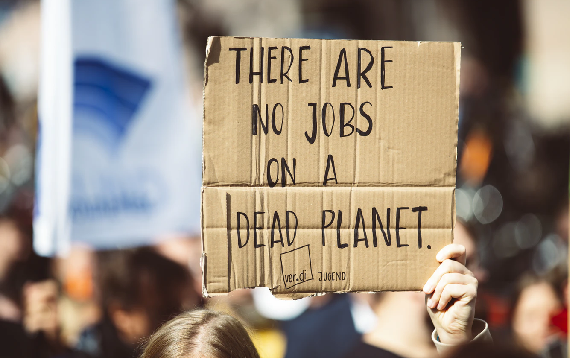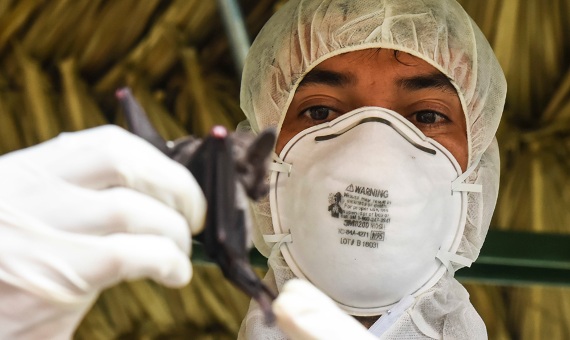Just a year ago, when 2019 was running out of its last days, everything suggested that 2020 was going to be the great year for sustainability. Along with the 2030 Agenda for Sustainable Development as a priority for a large number of public and private organizations, a growing social concern for sustainability on the planet was occuring along with an increase in environmental mobilizations, especially among younger people.
However, just as that feeling that the time had finally arrived to take the planet seriously, it was cut short by an unforeseen event: the arrival of a global pandemic. The coronavirus and the efforts to combat it have inevitably wreaked havoc on the achievement of the Sustainable Development Goals globally, and the year will close with not such optimistic numbers in many of the indicators established to measure the progress.

Despite this, the global health crisis that we are facing due to the pandemic could be only a test compared to the devastating consequences that the climate crisis can cause in the near future if action is not taken quickly. For this reason, this year at OpenMind we have continued working to offer reference information on sustainability and the environment. Here is a selection of some key themes to prepare us to regain our focus for next year.
COVID-19 and sustainability
While it may seem that 2020 will be a year to remember for a long time for reasons that seem distant from our sustainability goals, in reality there are many issues in which both worlds intersected. Without further ado, it begins with the very origin of the disease.
Zoonoses and the origin of large pandemics: Zoonoses is the process by which diseases are naturally transmitted from animals to humans, either through direct exposure of the person to the animal, or through the consumption of foods derived from such animals. Although at the moment there is no scientific confirmation regarding the animal from which the COVID-19 disease made the leap to humans, what does seem clear is that it belongs to a family of viruses characteristic to bats which could have infected humans directly or indirectly, through another animal. In this article, we discussed the phenomenon and other great pandemics that have originated through this.

Coronavirus´ effects on the environment: During the months where a good portion of the world’s population were locked in their homes during the harshest period of confinement could have had consequences on the environment, as analyzed in this article. The other side of the coin shows that the massive use of disposable items such as masks and gloves presents dangers for sustainability, as this article narrates.
Endangered species: The Atlantic horseshoe crab, a species known as a “living fossil” for having existed for millions of years with a virtually unchanged appearance, is the biomedical industry’s favorite for testing implants and injectable medicines (including vaccines). Conservationists warn that current efforts to develop and test vaccines against the coronavirus could accelerate its disappearance from the seas.
Biodiversity
In 2011, the UN announced the arrival of the Decade on Biodiversity, a ten-year initiative aimed at combating the loss of species and biological wealth, which ends in 2020. Having arrived at the final stretch, in this article we analyze what progress has been made in the last ten years.
Today’s biodiversity is the result of millions of years of evolution conditioned by natural processes and increasingly by human action. The loss of biodiversity puts humans and our planet´s health at risk, because many activities and products that humans depend on derive from it: food, fuel, and our climate. An ecological imbalance also causes certain invasive species to proliferate excessively and thus strengthen their survival, which is why there are species that environmentalists themselves want to eradicate.
The future of cities
More than half of the world’s citizens live in cities and this percentage could reach almost 70 percent in 2050. With these figures, it seems clear that it is necessary to rethink the foundations of these large population centers so that they can live in harmony with their surroundings.
The areas for improvement are diverse and several tests are being carried out towards the goal of achieving more sustainable cities in the future. From the materials with which the houses are built, which should ideally be durable over time and possible to reuse, to construction with bioclimatic architecture techniques, which take into account climatic conditions in the organization and building design of urban centers through sustainable urbanism, which applies circular economy principles to the planning of buildings and cities.

In addition, innovations aimed at controlling the temperatures of hour homes more efficiently, in terms of heating and cooling, will be crucial.
Greener energy
Speaking of energy efficiency, the transition to using renewable energy could serve as an incentive for employment recovery after the health crisis, so that 2020 could have provided a new impetus for its development.
Research areas in this field range from technologies that promise to revolutionize photovoltaic solar energy via metallic hydrogen, that is, the achievement of converting the simplest gas, hydrogen, into a metal that could be the ultimate superconductor that could bring with it significant energy savings.
Basic concepts to know more about
In today’s sustainability, there are many terms that are frequently referred to that are convenient to understand and at OpenMind we wanted to offer a simple explanation of some of them. In the regulatory field we have discussed, among other topics, what kind of carbon neutrality we aspire to achieve in 2050, or what the European Green Deal, the European roadmap to stop the advancement of climate change in various interconnected areas, consists of. Other important concepts that we have dealt with have been climate income, the zero waste movement and programmed obsolescence.
In 2021, we will continue working to provide you with context and answers to the great sustainability questions of our era, with the aim of doing our bit in ensuring a healthy planet for future generations.
Comments on this publication